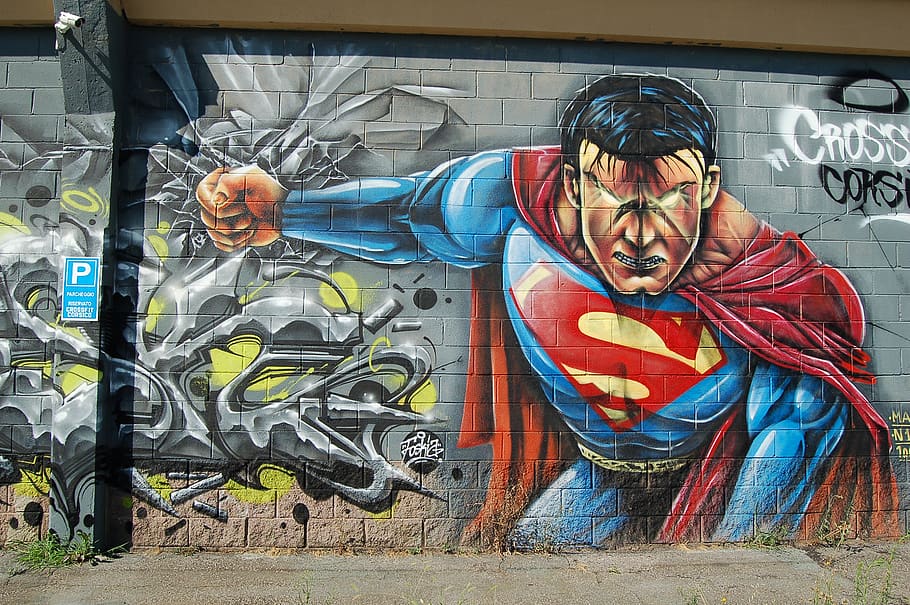Unconditionally accepting pain isn’t something we do on purpose, as an act of will, but rather it is something that just happens – something that happens spontaneously as a result of us having the intuitive understanding that it is actually OK to be in pain…
So if I don’t happen to have this intuitive understanding and I try to be OK about the pain, then this just isn’t going to work out! I am going to be willing myself to accept the pain, I am going to be holding myself rigidly in the pain, and this isn’t the same thing at all. This isn’t ‘unconditionally allowing myself to feel the pain’ but something very different. This is another kettle of fish altogether – this is forcing.
Why ‘forcing’ doesn’t work is very easy to show – if I am tensing up, if I am straining, if I am pushing myself or holding myself rigidly, then I am of course attempting to obtain a result, I am attempting to achieve an outcome. If I am straining at all, tensing up at all, then this shows that I am trying to get something as a result of what I am doing. Otherwise, why would I be straining?
So wilful effort shows that I am hoping to obtain something or other as a result of my effort, which means that I am doing whatever I am doing conditionally rather than unconditionally! I am doing whatever it is that I am doing on the condition that I get something back for the effort I am putting into it. I am accepting the pain (or tolerating the pain) on the condition that I obtain some sort of advantage or benefit for accepting it, and this is just not going to work at all…
Conditional acceptance of pain means that ‘it’s not OK but I’m willing to put up with it because it’s going to be worth my while in some way, because there will be some sort of ‘pay-off’.’ I’m doing it for a reason, I’ve got my eye on the advantage, I’m trying to turn a profit, etc…
Unconditional acceptance of pain means that I have the deep-down intuitive understanding that it is actually OK for the pain to be there, so this understanding is the reason that I don’t feel the need to get rid of it. And it is because I don’t feel the need to get rid of the pain that I am able to ‘accept’ it.
But how on earth can it be OK for the pain to be there? Pain isn’t OK. ‘Pain’ equals ‘not OK’ – that is the message of pain, if pain can be said to have a message. So how can it possibly be ‘OK’ for pain to be ‘not OK’?
The most essential way to answer this question is to point out that both ‘OK’ and ‘not OK’ relate exclusively to the self, are about the self, are arising from the self and nowhere else. ‘Good’ and ‘bad’, ‘right’ and ‘wrong’, ‘accept’ and ‘reject’ are all polarities that arise from the self. This is what the self does – it splits the world up into polarities of ‘good versus bad’, ‘accept versus reject’, ‘YES versus NO’! This type of ‘personalized polarization’ is how the self relates to the world, but this polarization does not exist in the world.
As soon as we start talking in this way however understanding becomes problematic, to say the least – how can I not relate to the world in terms of the self? How can I not be ‘my self’? My self is what I fundamentally am, after all, and so what choice do I have? I can’t be what I’m not…
The assumption that the everyday self is ‘who I fundamentally am’ is not true at all however – as I could see for myself if only I took the trouble to actually observe what I take to be my static, unchanging self. The static or unchanging aspect of myself that I take for granted the whole time is my idea of myself and this is why it is static and unchanging! Ideas don’t change – they are fixed things because they are not actually part of reality. That’s how we know that ideas aren’t reality – because they don’t change, because they can remain exactly the same for hundreds of years.
In a way, we could say that ideas don’t exist in time at all because time – as the philosopher Henri Bergson says – is a continual ‘becoming’. Thoughts are abstractions and my idea of ‘who I am’ is one more abstraction amongst all the rest, one more abstraction to ‘add to the pile’. If I were to observe myself as I am in reality – not as I think I am, not as I assume I am – then I would see that I am part of that same universal ‘becoming’ that Bergson talks about. I would see that there is no fixed self which everything else orbits around.
The understanding that ‘I am not myself’ is therefore the key to everything – without this understanding we understand nothing because everything we think we understand is all predicated upon a basis or foundation that just isn’t there! Assuming that ‘I am who I think I am’ is the road to nowhere…
Alan Watts defines the self as a ‘habitual knot of tension’ – he speaks of it as a chronic knot of futile straining, just like a painfully cramped muscle. If it could release then there would be ease, but the habit of being tense has set in so deeply that we have even forgotten that there is such a possibility! The option of ‘not-straining’ is therefore something that we frankly can’t understand. The suggestion that we can ‘let go of ourselves’ simply doesn’t make any sense to us; all we can do is keep on straining, keep on trying – hoping that one day we will ‘get it right’, hoping that one day we will be able to ‘strain successfully’ and finally obtain whatever it is that we were straining for…
We could also (and equivalently) say that the self is a definite statement or assertion: the thing about a definite statement or assertion being that it requires forceful effort, that it requires a ‘convulsive act of will’. In order to make a definite statement I have to seize hold of one thing and push another thing away – I have to agree with what I want and deny what I don’t want. I have to accept one possibility and reject all the others, and so on.
If I don’t continually strain myself to maintain the division then the division (i.e. the division between what I am accepting and what I am rejecting) will no longer be there – it will disappear without leaving even the slightest trace! So if the division that we are talking about here is the division between ‘self and other’, then what this means is that when I stop straining and striving then that all-important self which I am so very afraid of losing will no longer be there…
When we truly, genuinely, deeply relax, therefore, then the self that we are so attached to ceases to be there. The brittle sense that I have of being ‘this but not that’ ceases to be there. The defined or asserted identity ceases to be there. I am still there, but the not the painfully clenched knot of tension which is ‘self’ or ‘ego’…
What we lose sight of in the continual struggle to successfully assert ‘who I am’ is therefore the delightful truth that I didn’t actually need to get caught up in this futile struggle in the first place!
Who I am really isn’t dependent upon this rigid and effort-requiring division between ‘what I am agreeing with’ and ‘what I am denying’, ‘what I am grasping’ and ‘what I am pushing away’. Who I am really isn’t dependent upon anything – certainly not on some gargantuan effort of will on my part! It is this false conviction that says I have to assert myself in some fundamental way in order to continue to carry on existing (in order not to lose myself) that keeps me in the trap – the trap of never being able to genuinely relax and be who I truly am…
I have this deep-seated belief – which I never properly examine – that I have to win existence, that I have to struggle to fight off the threat of ‘non-existence’, and that things won’t be OK unless I make them OK, unless I personally see to it that they are OK. Or we could say that I have this unconscious need to be forever proving myself or promoting myself or validating myself in order win the prize of actually existing, and that the invisible irony here is that by all this frantic struggling I actually prevent myself from being who I really am…
The upshot of all this is that I end up identifying with the chronic knot of tension and thinking that this is who I actually am, which means that the whole thing becomes a particularly vicious circle! I am straining to define myself and maintain myself and validate myself and this straining becomes something I can’t opt out of, something I can’t let go of, something I never even perceive that I could possibly let go of, and so it all just goes round in circles. I think that I am this rigidly defined identity, that I am such-and-such a role or such-and-such a person, when underneath it all ‘who I really am’ is undefined consciousness.
Undefined consciousness doesn’t have to maintain itself via an effort of will, it doesn’t have to regulate itself or control itself in accordance with some arbitrary set of rules. It doesn’t have to monitor itself to make sure it is ‘succeeding rather than failing’, ‘getting it right rather than getting it wrong’. No effort is needed because it already is what it is, in direct contrast to the conditioned self which is only ‘what it says it is’ (or only ‘what it believes itself to be’) and so – on this account – has to continually maintain itself via a protracted effort of will.
Because the everyday self is so narrowly and tightly defined it feels pain in a way that undefined consciousness, for all its untrammeled sensitivity, does not. When the positively asserted self feels pain the experience is underpinned with a very particular sense or intimation of threat – because this self is narrowly defined it relates to everything as being either ‘right’ or ‘wrong’, and pain therefore is most certainly wrong. So we have the experience of pain and underpinning this pain is the feeling that the pain is wrong, that it is threatening us in some sinister or malign kind of a way. The pain is inescapably tinged with this dark and sinister flavour because I perceive it to be fundamentally threatening the integrity of the all-important self.
This perception of ‘wrongness’ translates into unequivocal resistance. ‘Right’ means that I grasp (or ‘clutch hold of’), and ‘wrong’ means that I reject – ‘wrong’ means that I push away (or run away). In the first instance we have resistance of the positive variety, and in the second instance we have resistance of the negative variety – but ultimately resistance is resistance and it makes no difference whether we accept or reject, affirm or deny, say YES or say NO. It is after all a purely mechanical (or compulsive) reaction in either case!
The life of the totally defined self is, therefore, wholly made up of either the one type of resistance or the other, the one type of ‘compulsive reactivity’ or the other. It is entirely made up of – we might say – either grasping on the one hand or fighting/fleeing on the other. When I manage to successfully grasp (or successfully fight/flee) then I feel pleasure, and when I am not able to be successful in this regard then I feel pain. For the defined self – the self which is ‘this but not that’ – the struggle to obtain pleasure and avoid pain (by successfully obeying whatever compulsions happen to arise) constitutes the whole remit of life…
The only freedom from this dire mechanical business of always having to be in control, always having to successfully avoiding pain and obtaining pleasure, comes from that part of us which is not defined, that part of us that has not been ‘positively asserted’. If we have – however unwittingly – opted for the life of the totally defined self, the self which has been created by our black-and-white thinking, then the ‘flip-side’ of the sense of security which we obtain from being wholly defined is that we are also wholly unfree.
To be unfree is to experience pain (i.e. being ‘the wrong way rather than the right way’) as being absolutely unacceptable, and it is this perception of ‘where we are’ as being utterly and completely unacceptable that makes pain so punishing for us. This then raises the question as to what pain would feel like if we weren’t to automatically label it as being wrong, if we were in fact actually allowed to feel it
The answer is – as experience shows – that there is something about the quality of the pain which we are undergoing that changes just as soon as we drop our automatic resistance, our automatic objection to it. Because I am not objecting so flatly to the pain the pain – in its turn – is not pinning me down, is not suffocating me, is not oppressing me. I am feeling pain but I am not being defined by it.
When I don’t fall into the trap of meeting the pain from the very narrow and rigid standpoint of the defined self – and thus being defined even more narrowly as ‘the one who is afflicted with the pain’ – then the situation that I’m in is ‘freed up’ in a very important way. The log-jam, the stalemate, the ‘impossible situation’ dissolves straightaway into something less black-and-white, something less unforgiving, and so things are now free to change.
When I feel pain as the undefined self rather than the defined self then that pain is a very different sort of a thing. Because I am no longer fighting against it, it is no longer fighting against me. Because I don’t have so much of a problem with it, it no longer has so much of a problem with me. Being there gently with the pain is a reciprocating kind of business – I give the pain the space to be there, and the pain (for its part) gives me the space to be here…
And as we have already said, the reason I am not fighting against the pain is not because I have told myself not to fight against it (not because ‘not-fighting’ is the new strategy that I have discovered!) but because I have intuitively understood that I don’t need to fight against it.
I don’t need to fight against the pain because I am not being threatened (or ‘denied’) by it and I am not being threatened or denied by it because I am no longer the defined (or ‘positive’) self.
The reason I am no longer ruled by the need to ‘fight against’ the pain, and label it as being ‘not OK’, is because I have intuitively realized the truth of ‘no self’, because I have intuitively understood the truth of what in Buddhist terminology is called anatta.






